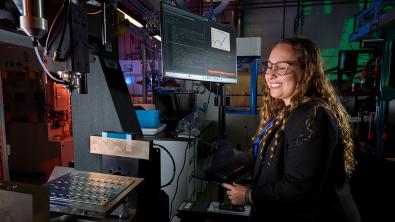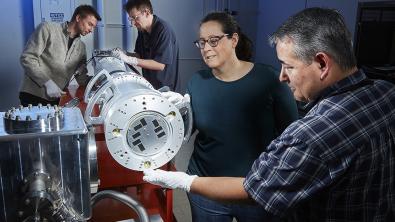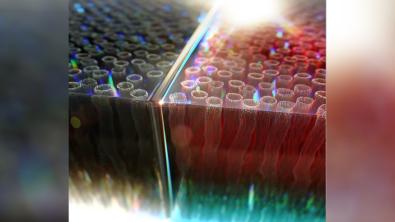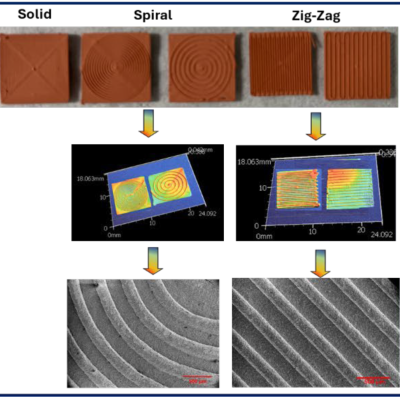Global energy production, storage and transport are both essential and environmentally impactful. New energy sources, managing and capturing the biproducts of energy expenditure, and repurposing of carbon dioxide are issues of national and global importance. Researchers at LLNL continue to broadly invent novel technologies that intersect at materials, mechanical, electrical, biological and chemical interfaces. Inventions in this portfolio range from bioreactors, to materials, to batteries, motors and new systems.
Portfolio News and Multimedia
To address this critical energy need, the California Energy Commission recently awarded local startup DarmokTech and Lawrence Livermore National Laboratory (LLNL) a grant of $2 million over three years to pursue recyclable, sodium polymer-based batteries. The technology aims to enhance cost-effective energy storage and grid reliability in the state and beyond. The collaboration is indicative of the type of public-private partnerships that develop as a result of technology transfer and the entrepreneurial programs run by LLNL’s Innovation and Partnerships Office (IPO).
The trade journal R&D World Magazine recently announced the winners of the awards, often called the “Oscars of innovation,” recognizing new commercial products, technologies and materials that are available for sale or license for their technological significance.
Lawrence Livermore National Laboratory (LLNL) scientists and engineers have earned four awards among the top 100 inventions worldwide. With this year’s results, the Laboratory has now collected a total of 186 R&D 100 awards since 1978.
Submitted through LLNL’s Innovation and Partnerships Office (IPO), these awards recognize the impact that Livermore innovation, in collaboration with industry partners, can have on the U.S. economy as well as globally.
A multidisciplinary team of researchers at Lawrence Livermore National Laboratory (LLNL) developed a new type of electrically controlled, near-infrared smart window that can cut near-infrared light transmission by almost 50%. Their secret ingredient? Vertically aligned carbon nanotubes—tiny, tube-shaped structures made from carbon atoms that are thousands of times thinner than a human hair. The research was published in Nano Letters.
Information about the opportunity to license the technology can be found here: Electrochromic Devices Made from VACNTs





